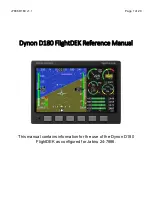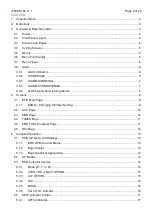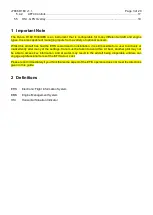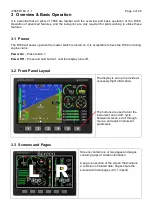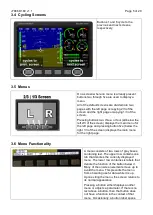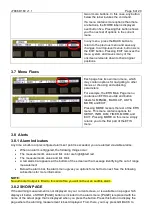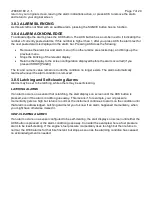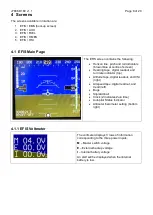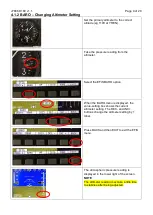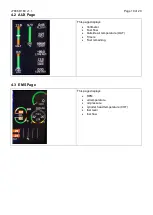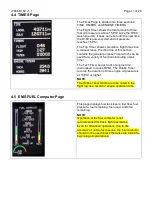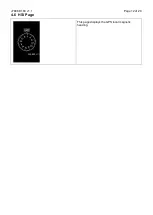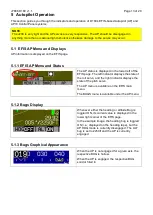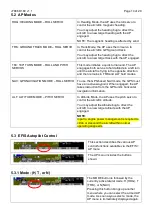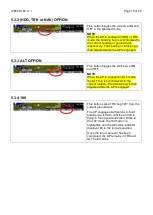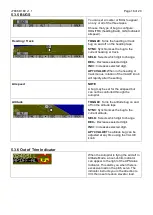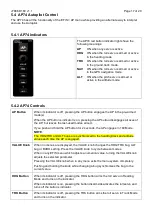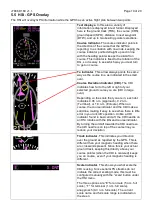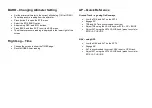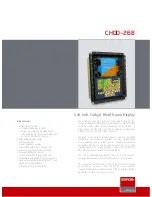
J7886 D180 v1.1
Page 7 of 20
return to your original screen, leaving the alarm indications active, or press ACK to remove the alarm
and return to your original screen.
3.8.3 ALARM SILENCING
As this aircraft is not fitted with an audible alarm, pressing the SILNCE button has no function.
3.8.4 ALARM ACKNOWLEDGE
To acknowledge the alarm, press the ACK button. The ACK button has a number next to it indicating the
number of currently posted alarms. If this number is higher than 1, after you press ACK the alarm text for
the next posted alarm is displayed in the alarm bar. Pressing ACK does the following:
Removes the alarm bar and alarm menu (if no other alarms are stacked up), and brings up the
previous menu.
Stops the blinking of the relevant display
Returns the display to the screen configuration displayed before the alarm occurred (if you
pressed SHOW [PAGE])
The tic and numeric value remain red until the condition no longer exists. The alarm automatically
rearms whenever the alarm condition is removed.
3.8.5 Latching and Self-clearing Alarms
Alarms may be set to be latching, while others may be self-clearing.
LATCHING ALARMS
If an alarm occurs on a sensor that is latching, the alert displays on screen until the ACK button is
pressed,
even if the alarm condition goes away
. This means if, for example, your oil pressure
momentarily gets too high but returns to normal, the instrument continues to alarm on the condition until
that alarm is acknowledged. Latching alarms let you to know if an alarm happened momentarily, when
you might have otherwise missed it.
SELF-CLEARING ALARMS
If an alarm occurs on a sensor configured to be self-clearing, the alert displays on screen until either the
ACK button is pressed
or
the alarm condition goes away. Consider the example where a fuel pressure
alarm to be isself-clearing. If the engine’s fuel pressure momentarily rises too high but then returns to
normal, the D180 alarms for that brief instant, but stops as soon as the alarming condition has ceased;
no acknowledgement is needed.

